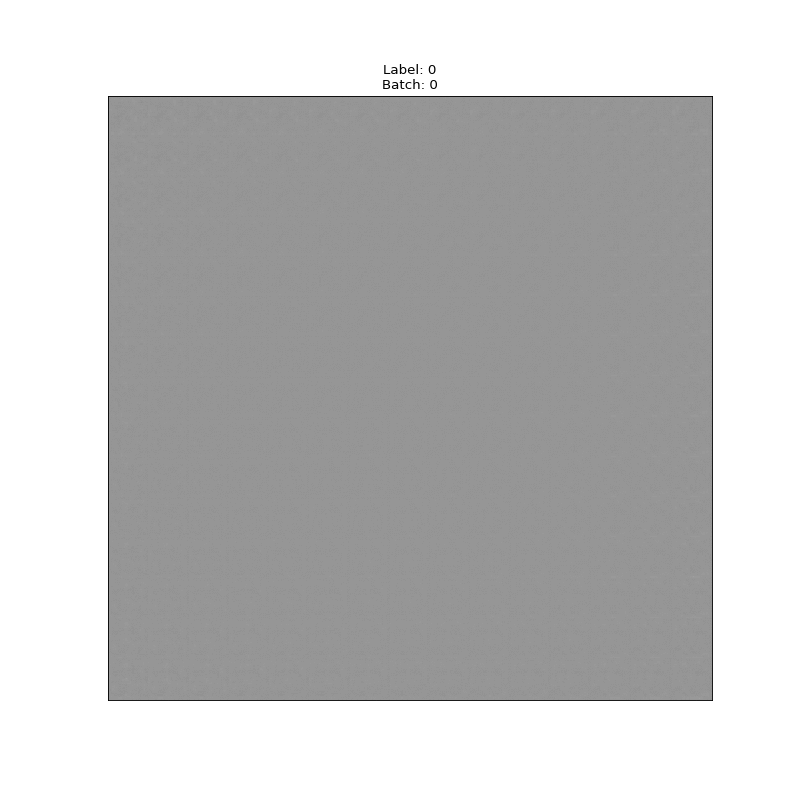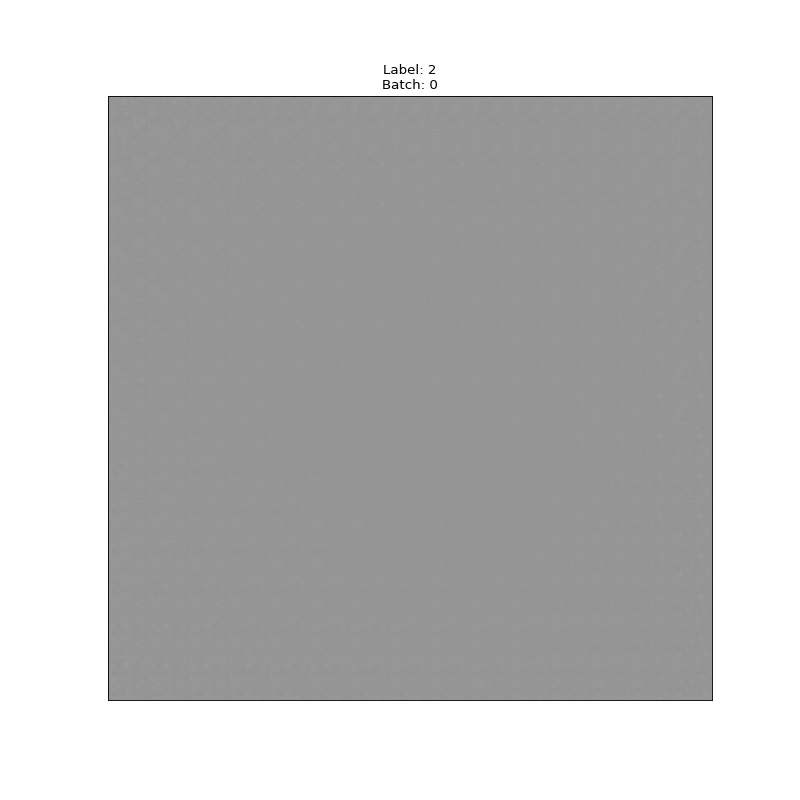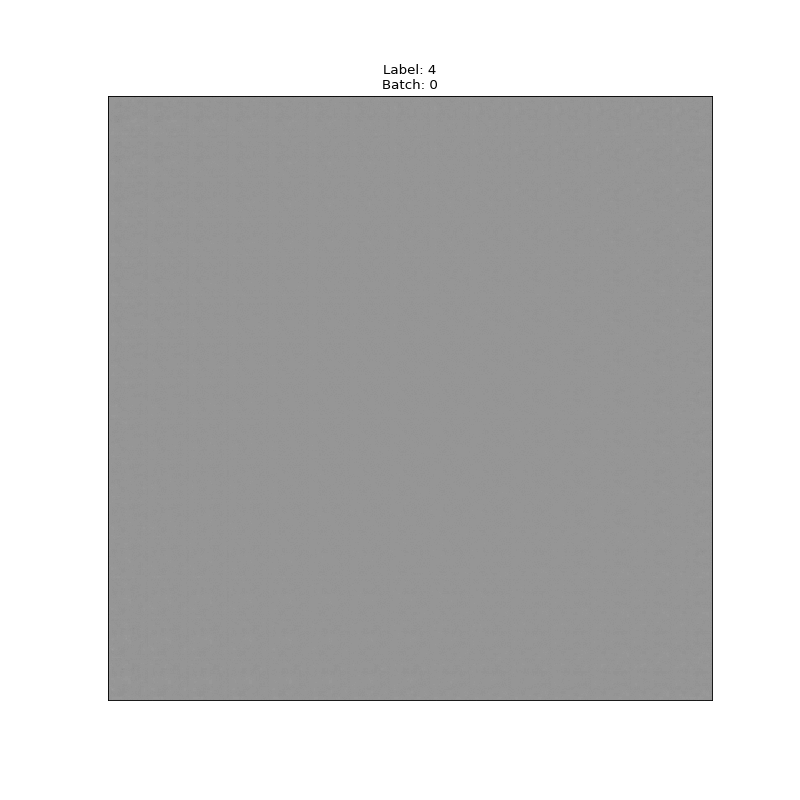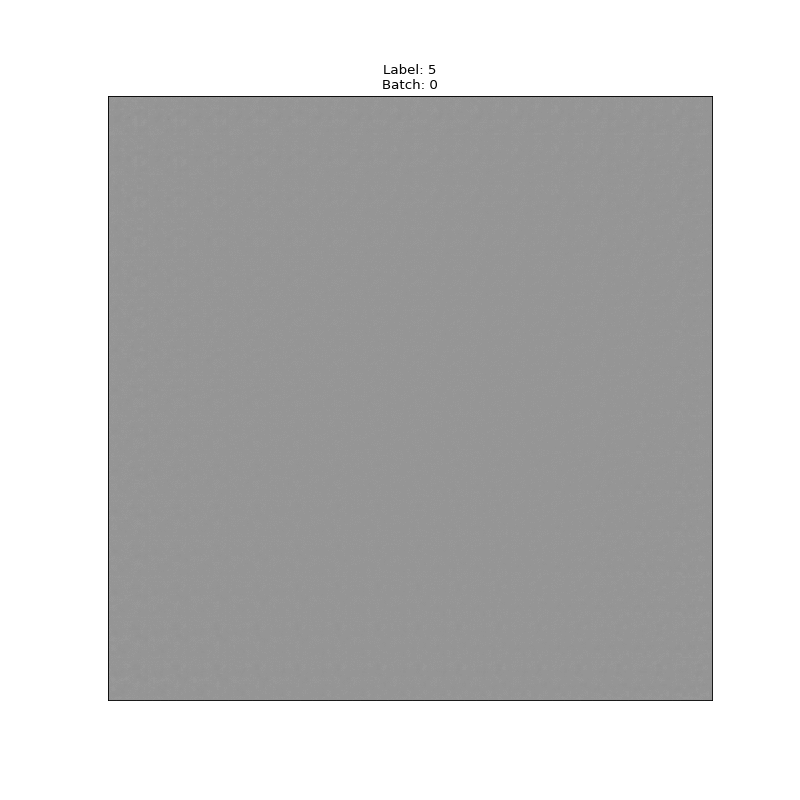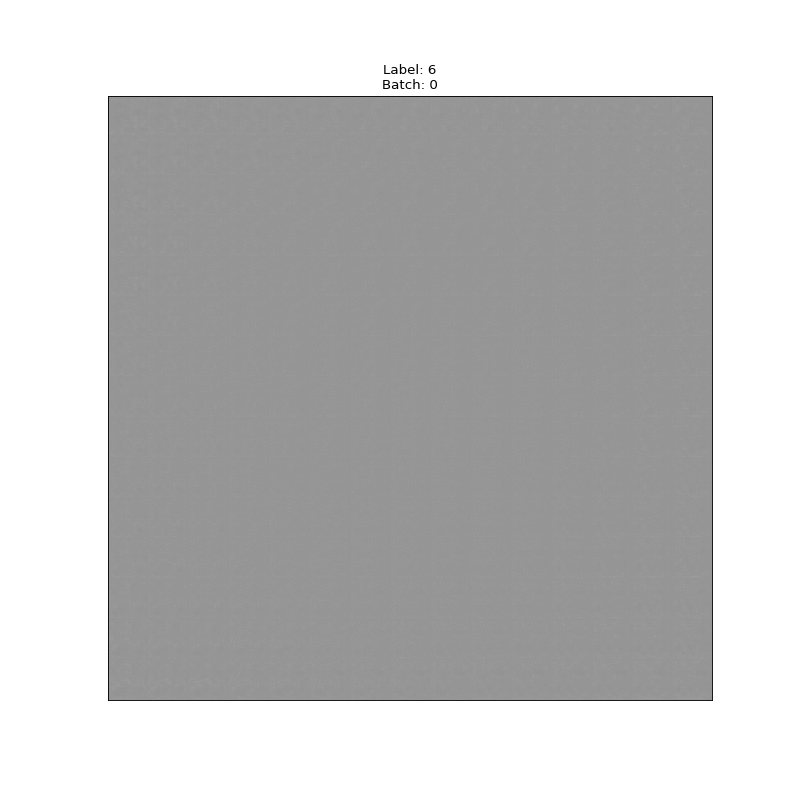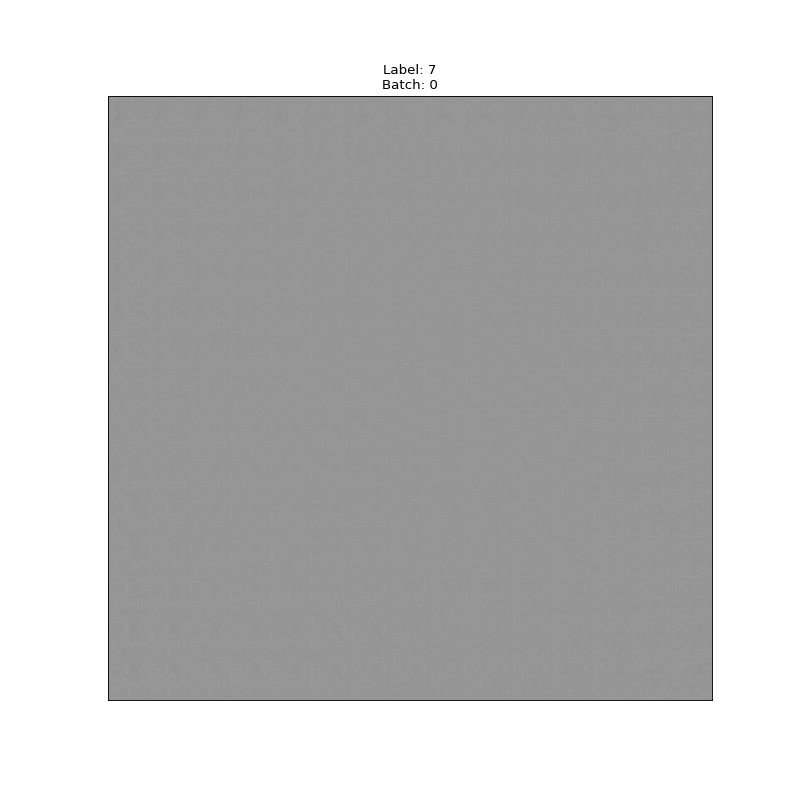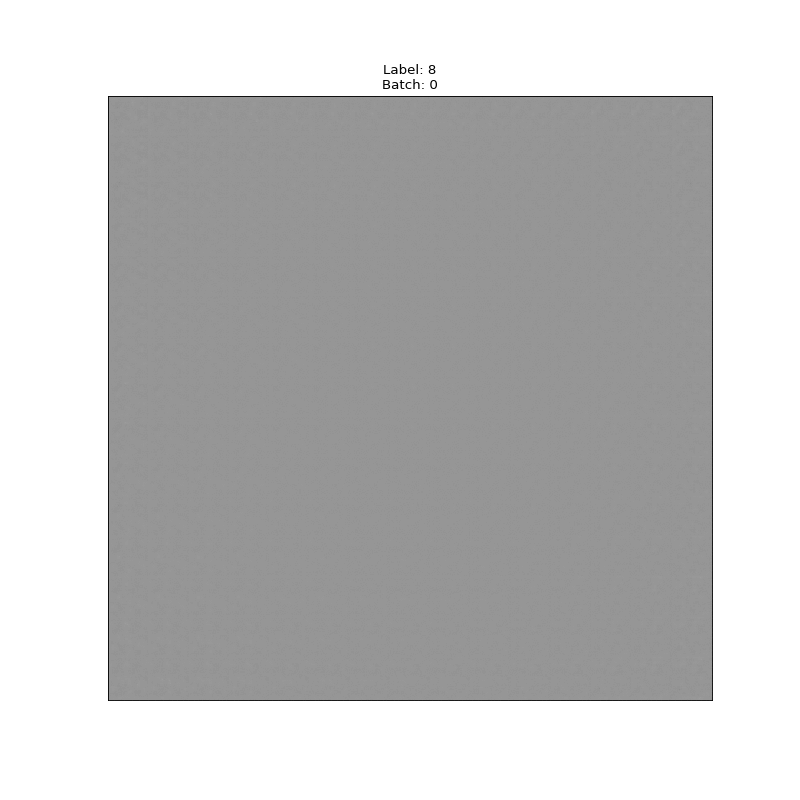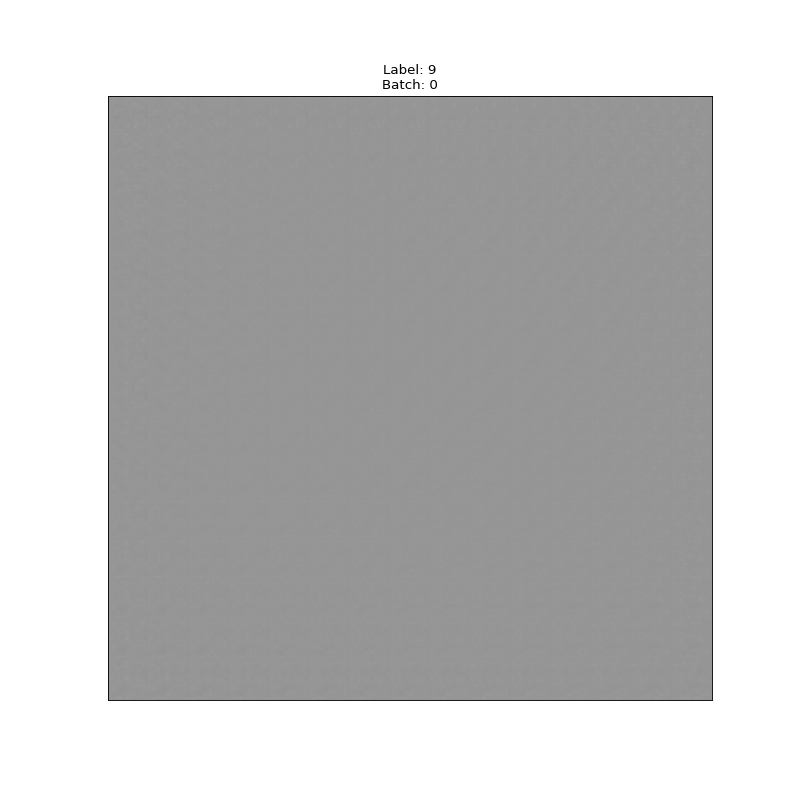јвтоэнкодеры в Keras, „асть 5: GAN(Generative Adversarial Networks) и tensorflow |
—одержание
- „асть 1: ¬ведение
- „асть 2: Manifold learning и скрытые (latent) переменные
- „асть 3: ¬ариационные автоэнкодеры (VAE)
- „асть 4: Conditional VAE
- „асть 5: GAN (Generative Adversarial Networks) и tensorflow
- „асть 6: VAE + GAN
(»з-за вчерашнего бага с перезалитыми картинками на хабрасторейдж, случившегос€ не по моей вине, вчера был вынужден убрать эту статью сразу после публикации. ¬ыкладываю заново.)
ѕри всех преимуществах вариационных автоэнкодеров VAE, которыми мы занимались в предыдущих постах, они обладают одним существенным недостатком: из-за плохого способа сравнени€ оригинальных и восстановленных объектов, сгенерированные ими объекты хоть и похожи на объекты из обучающей выборки, но легко от них отличимы (например, размыты).
Ётот недостаток в куда меньшей степени про€вл€етс€ у другого подхода, а именно у генеративных сост€зающихс€ сетей Ч GANТов.
‘ормально GANТы, конечно, не относ€тс€ к автоэнкодерам, однако между ними и вариационными автоэнкодерами есть сходства, они также пригод€тс€ дл€ следующей части. “ак что не будет лишним с ними тоже познакомитьс€.
оротко о GAN
GANТы впервые были предложены в статье [1, Generative Adversarial Nets, Goodfellow et al, 2014] и сейчас очень активно исследуютс€. Ќаиболее state-of-the-art генеративные модели так или иначе используют adversarial.
—хема GAN:
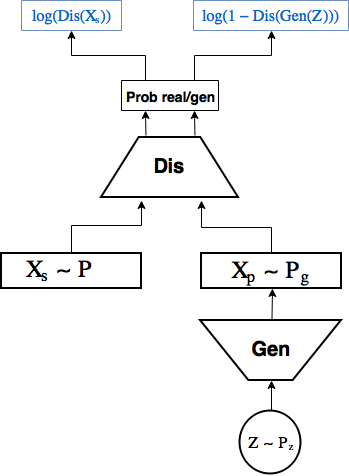
GANТы состо€т из 2 нейронных сетей:
- 1-а€ Ч генератор сэмплит случайные числа из какого-то заданного распределени€
, например
и генерируют из них объекты
, которые идут на вход второй сети,
- 2-а€ Ч дискриминатор получает на вход объекты из выборки
и созданные генератором
, и учитс€ предсказывать веро€тность того, что конкретный объект реальный, выдава€ скал€р
.
ѕри этом генератор тренируетс€ создавать объекты, который дискриминатор не отличит от реальных.
–ассмотрим процесс обучени€ GAN.
√енератор и дискриминатор обучаютс€ отдельно, но в рамках одной сети.
ƒелаем k шагов обучени€ дискриминатора: за шаг обучени€ дискриминатора параметры
ƒалее шаг обучени€ генератора: обновл€ем параметры генератора
—хема обучени€:
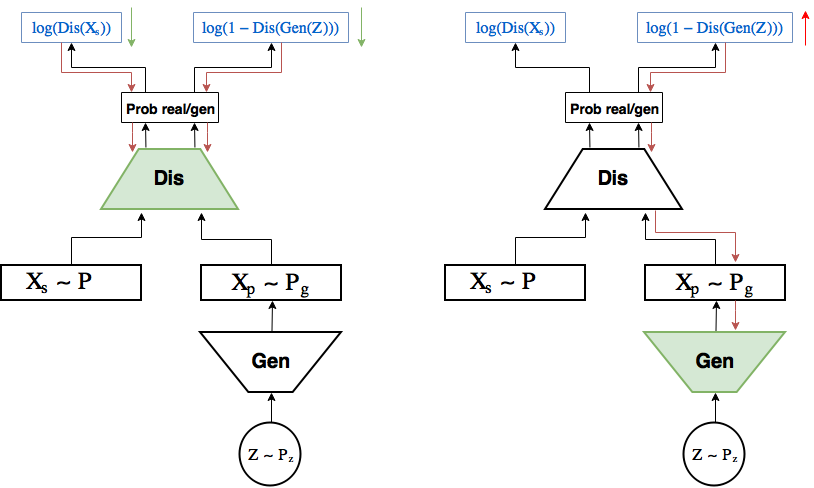
Ќа левой картинке шаг обучени€ дискриминатора: градиент (красные стрелки) протекает от лосса только до дискриминатора, где обновл€ютс€
«адача, которую решает GAN формулируетс€ так:
ѕри заданном генераторе оптимальный дискриминатор выдает веро€тность что почти очевидно, предлагаю на секунду об этом задуматьс€.
¬ [1] показываетс€, что при достаточной мощности обеих сетей у данной задачи есть оптимум, в котором генератор научилс€ генерировать распределение

»ллюстраци€ из [1]
ќбозначени€:
- черна€ точечна€ крива€ Ч насто€щее распределение
,
- зелена€ Ч распределение генератора
,
- син€€ Ч распределение веро€тности
дискриминатора предсказать класс реального объекта,
- нижн€€ и верхн€€ пр€мые Ч множество всех
и множество всех
, стрелочки олицетвор€ют отображение
.
Ќа картинке:
- (a)
и
довольно разные, но дискриминатор неуверенно отличает одно от другого,
- (b) дискриминатор после k шагов обучени€ уже отличает их увереннее,
- (с) это позвол€ет генератору
, руководству€сь хорошим градиентом дискриминатора
, на границе двух распределений подвинуть
ближе к
,
- (d) в результате многих повторений шагов (а), (b), (с)
совпало с
, и дискриминатор более не способен отличать одно от другого:
. “очка оптимума достигнута.
Conditional GAN
“очно как в прошлой части мы сделали Conditional VAE, просто передава€ в энкодер и декодер лейбл цифры, здесь мы будем передавать его в генератор и дискриминатор [2]
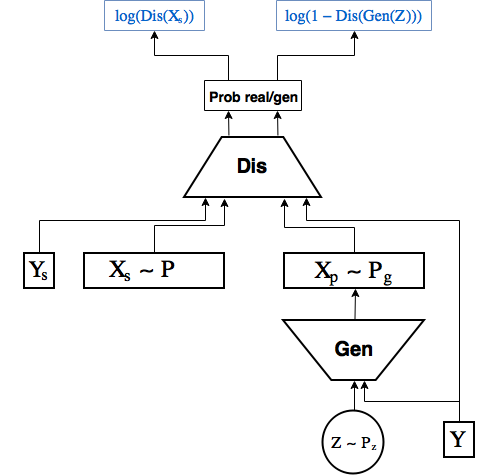
од
¬ отличие от предыдущих частей, где получалось обходитьс€ одним kerasТом, здесь с этим возникает проблема. ј именно, нужно в одной и той же сети по очереди обновл€ть либо только параметры генератора, либо только дискриминатора. ≈сли исхитритьс€, то можно сделать это и чисто в kerasТе, но по мне проще и полезнее подключить сюда и tensorflow.
¬ блоге kerasТа есть небольшой туториал [3], как это делать.
Ѕлаго keras легко сочетаетс€ с tensorflow Ч не даром он попал в tensorflow.contrib.
Ќачнем с импортировани€ нужных модулей и загрузки датасета.
from IPython.display import clear_output
import numpy as np
import matplotlib.pyplot as plt
%matplotlib inline
from keras.layers import Dropout, BatchNormalization, Reshape, Flatten, RepeatVector
from keras.layers import Lambda, Dense, Input, Conv2D, MaxPool2D, UpSampling2D, concatenate
from keras.layers.advanced_activations import LeakyReLU
from keras.models import Model, load_model
from keras.datasets import mnist
from keras.utils import to_categorical
(x_train, y_train), (x_test, y_test) = mnist.load_data()
x_train = x_train.astype('float32') / 255.
x_test = x_test .astype('float32') / 255.
x_train = np.reshape(x_train, (len(x_train), 28, 28, 1))
x_test = np.reshape(x_test, (len(x_test), 28, 28, 1))
y_train_cat = to_categorical(y_train).astype(np.float32)
y_test_cat = to_categorical(y_test).astype(np.float32)
ƒл€ работы в keras и tensorflow одновременно надо зарегистрировать tensorflow сессию в keras, это нужно дл€ того чтобы keras создавал все внутренние переменные в рамках используемой сессии.
from keras import backend as K
import tensorflow as tf
sess = tf.Session()
K.set_session(sess)
ќпределим основные глобальные константы:
batch_size = 256
batch_shape = (batch_size, 28, 28, 1)
latent_dim = 2
num_classes = 10
dropout_rate = 0.3
ќбучать модель мы теперь будем не с помощью метода .fit, а напр€мую из tensorflow, поэтому напишем итератор, возвращающий очередной батч:
def gen_batch(x, y):
n_batches = x.shape[0] // batch_size
while(True):
for i in range(n_batches):
yield x[batch_size*i: batch_size*(i+1)], y[batch_size*i: batch_size*(i+1)]
idxs = np.random.permutation(y.shape[0])
x = x[idxs]
y = y[idxs]
train_batches_it = gen_batch(x_train, y_train_cat)
test_batches_it = gen_batch(x_test, y_test_cat)
ќборачиваем placeholderТы дл€ картинок, лейблов и скрытых переменных во вход€щие слои дл€ keras моделей:
x_ = tf.placeholder(tf.float32, shape=(None, 28, 28, 1), name='image')
y_ = tf.placeholder(tf.float32, shape=(None, num_classes), name='labels')
z_ = tf.placeholder(tf.float32, shape=(None, latent_dim), name='z')
img = Input(tensor=x_)
lbl = Input(tensor=y_)
z = Input(tensor=z_)
–еализовывать будем сразу CGAN, так как он лишь минимально отличаетс€ от обычного.
Ќапишем модель генератора. Keras работает со scopeТами, а нам нужно разделить генератор и дискриминатор, чтобы потом обучать их по-отдельности
with tf.variable_scope('generator'):
x = concatenate([z, lbl])
x = Dense(7*7*64, activation='relu')(x)
x = Dropout(dropout_rate)(x)
x = Reshape((7, 7, 64))(x)
x = UpSampling2D(size=(2, 2))(x)
x = Conv2D(64, kernel_size=(5, 5), activation='relu', padding='same')(x)
x = Dropout(dropout_rate)(x)
x = Conv2D(32, kernel_size=(3, 3), activation='relu', padding='same')(x)
x = Dropout(dropout_rate)(x)
x = UpSampling2D(size=(2, 2))(x)
generated = Conv2D(1, kernel_size=(5, 5), activation='sigmoid', padding='same')(x)
generator = Model([z, lbl], generated, name='generator')
ƒалее модель дискриминатора. «десь нам нужно добавить ко вход€щему изображению еще лейбл цифры. ƒл€ этого после применени€ первого сверточного сло€ добавим к фильтрам лейблы. —перва функци€, котора€ это делает, потом модель дискриминатора.
def add_units_to_conv2d(conv2, units):
dim1 = int(conv2.shape[1])
dim2 = int(conv2.shape[2])
dimc = int(units.shape[1])
repeat_n = dim1*dim2
units_repeat = RepeatVector(repeat_n)(lbl)
units_repeat = Reshape((dim1, dim2, dimc))(units_repeat)
return concatenate([conv2, units_repeat])
with tf.variable_scope('discrim'):
x = Conv2D(128, kernel_size=(7, 7), strides=(2, 2), padding='same')(img)
x = add_units_to_conv2d(x, lbl)
x = LeakyReLU()(x)
x = Dropout(dropout_rate)(x)
x = MaxPool2D((2, 2), padding='same')(x)
l = Conv2D(128, kernel_size=(3, 3), padding='same')(x)
x = LeakyReLU()(l)
x = Dropout(dropout_rate)(x)
h = Flatten()(x)
d = Dense(1, activation='sigmoid')(h)
discrim = Model([img, lbl], d, name='Discriminator')
ќпределив модели, мы можем примен€ть их напр€мую к placeholderТам как обычные tensorflow операции.
generated_z = generator([z, lbl])
discr_img = discrim([img, lbl])
discr_gen_z = discrim([generated_z, lbl])
gan_model = Model([z, lbl], discr_gen_z, name='GAN')
gan = gan_model([z, lbl])
“еперь лосс ошибки определени€ реального изображени€, и лосс сгенерированного, а также на их основе лоссы генератора и дискриминатора.
log_dis_img = tf.reduce_mean(-tf.log(discr_img + 1e-10))
log_dis_gen_z = tf.reduce_mean(-tf.log(1. - discr_gen_z + 1e-10))
L_gen = -log_dis_gen_z
L_dis = 0.5*(log_dis_gen_z + log_dis_img)
ќбычно в tensorflow, передава€ в оптимизатор лосс, он будет пытатьс€ минимизировать сразу все переменные, от которых он зависит. Ќам сейчас этого не надо: при обучении генератора, ошибка не должна трогать дискриминатор, хот€ должна сквозь него течь и наоборот.
ƒл€ этого дополнительно в оптимизатор надо передать список переменных, которые он будет оптимизировать. ƒостанем эти переменные из нужных scopeТов с помощью tf.get_collection
optimizer_gen = tf.train.RMSPropOptimizer(0.0003)
optimizer_dis = tf.train.RMSPropOptimizer(0.0001)
# ѕеременные генератора и дискриминаторы (отдельно) дл€ оптимизаторов
generator_vars = tf.get_collection(tf.GraphKeys.TRAINABLE_VARIABLES, "generator")
discrim_vars = tf.get_collection(tf.GraphKeys.TRAINABLE_VARIABLES, "discrim")
step_gen = optimizer_gen.minimize(L_gen, var_list=generator_vars)
step_dis = optimizer_dis.minimize(L_dis, var_list=discrim_vars)
»нициализируем переменные:
sess.run(tf.global_variables_initializer())
ќтдельно напишем функции, которые будем вызывать дл€ обучени€ генератора и дискриминатора:
# Ўаг обучени€ генератора
def step(image, label, zp):
l_dis, _ = sess.run([L_dis, step_gen], feed_dict={z:zp, lbl:label, img:image, K.learning_phase():1})
return l_dis
# Ўаг обучени€ дискриминатора
def step_d(image, label, zp):
l_dis, _ = sess.run([L_dis, step_dis], feed_dict={z:zp, lbl:label, img:image, K.learning_phase():1})
return l_dis
од сохранени€ и визуализации картинок:
од
# ћассивы, в которые будем сохран€ть результаты, дл€ последующей визуализации
figs = [[] for x in range(num_classes)]
periods = []
save_periods = list(range(100)) + list(range(100, 1000, 10))
n = 15 # артинка с 15x15 цифр
from scipy.stats import norm
# “ак как сэмплируем из N(0, I), то сетку узлов, в которых генерируем цифры, берем из обратной функции распределени€
grid_x = norm.ppf(np.linspace(0.05, 0.95, n))
grid_y = norm.ppf(np.linspace(0.05, 0.95, n))
grid_y = norm.ppf(np.linspace(0.05, 0.95, n))
def draw_manifold(label, show=True):
# –исование цифр из многообрази€
figure = np.zeros((28 * n, 28 * n))
input_lbl = np.zeros((1, 10))
input_lbl[0, label] = 1.
for i, yi in enumerate(grid_x):
for j, xi in enumerate(grid_y):
z_sample = np.zeros((1, latent_dim))
z_sample[:, :2] = np.array([[xi, yi]])
x_generated = sess.run(generated_z, feed_dict={z:z_sample, lbl:input_lbl, K.learning_phase():0})
digit = x_generated[0].squeeze()
figure[i * 28: (i + 1) * 28,
j * 28: (j + 1) * 28] = digit
if show:
# ¬изуализаци€
plt.figure(figsize=(10, 10))
plt.imshow(figure, cmap='Greys')
plt.grid(False)
ax = plt.gca()
ax.get_xaxis().set_visible(False)
ax.get_yaxis().set_visible(False)
plt.show()
return figure
n_compare = 10
def on_n_period(period):
clear_output() # Ќе захламл€ем output
# –исование многообрази€ дл€ рандомного y
draw_lbl = np.random.randint(0, num_classes)
print(draw_lbl)
for label in range(num_classes):
figs[label].append(draw_manifold(label, show=label==draw_lbl))
periods.append(period)
ќбучим теперь наш CGAN.
¬ажно, чтобы в самом начале дискриминатор не слишком стал побеждать, иначе обучение остановитс€. ѕоэтому здесь добавлены внутренние циклы как дл€ дискриминатора, так и дл€ генератора, и выход из них, когда одна сеть почти догон€ет другую.
≈сли дискриминатор сразу выигрывает у декодера, и обучение даже не успевает начатьс€, то можно попробовать замедлить обучение дискриминатора, либо несколько раз начинать заново.
batches_per_period = 20 # ак часто сохран€ть картинки
k_step = 5 # оличество шагов, которые могут делать дискриминатор и генератор во внутреннем цикле
for i in range(5000):
print('.', end='')
# ƒостанем новый батч
b0, b1 = next(train_batches_it)
zp = np.random.randn(batch_size, latent_dim)
# Ўаги обучени€ дискриминатора
for j in range(k_step):
l_d = step_d(b0, b1, zp)
b0, b1 = next(train_batches_it)
zp = np.random.randn(batch_size, latent_dim)
if l_d < 1.0:
break
# Ўаги обучени€ генератора
for j in range(k_step):
l_d = step(b0, b1, zp)
if l_d > 0.4:
break
b0, b1 = next(train_batches_it)
zp = np.random.randn(batch_size, latent_dim)
# ѕериодическое рисование результата
if not i % batches_per_period:
period = i // batches_per_period
if period in save_periods:
on_n_period(period)
print(l_d)
од рисовани€ гифок:
од
from matplotlib.animation import FuncAnimation
from matplotlib import cm
import matplotlib
def make_2d_figs_gif(figs, periods, c, fname, fig, batches_per_period):
norm = matplotlib.colors.Normalize(vmin=0, vmax=1, clip=False)
im = plt.imshow(np.zeros((28,28)), cmap='Greys', norm=norm)
plt.grid(None)
plt.title("Label: {}\nBatch: {}".format(c, 0))
def update(i):
im.set_array(figs[i])
im.axes.set_title("Label: {}\nBatch: {}".format(c, periods[i]*batches_per_period))
im.axes.get_xaxis().set_visible(False)
im.axes.get_yaxis().set_visible(False)
return im
anim = FuncAnimation(fig, update, frames=range(len(figs)), interval=100)
anim.save(fname, dpi=80, writer='imagemagick')
for label in range(num_classes):
make_2d_figs_gif(figs[label], periods, label, "./figs4_5/manifold_{}.gif".format(label), plt.figure(figsize=(10,10)), batches_per_period)
–езультаты:
GAN
ћногообразие цифр дл€ обычного GAN (без передачи лейблов)
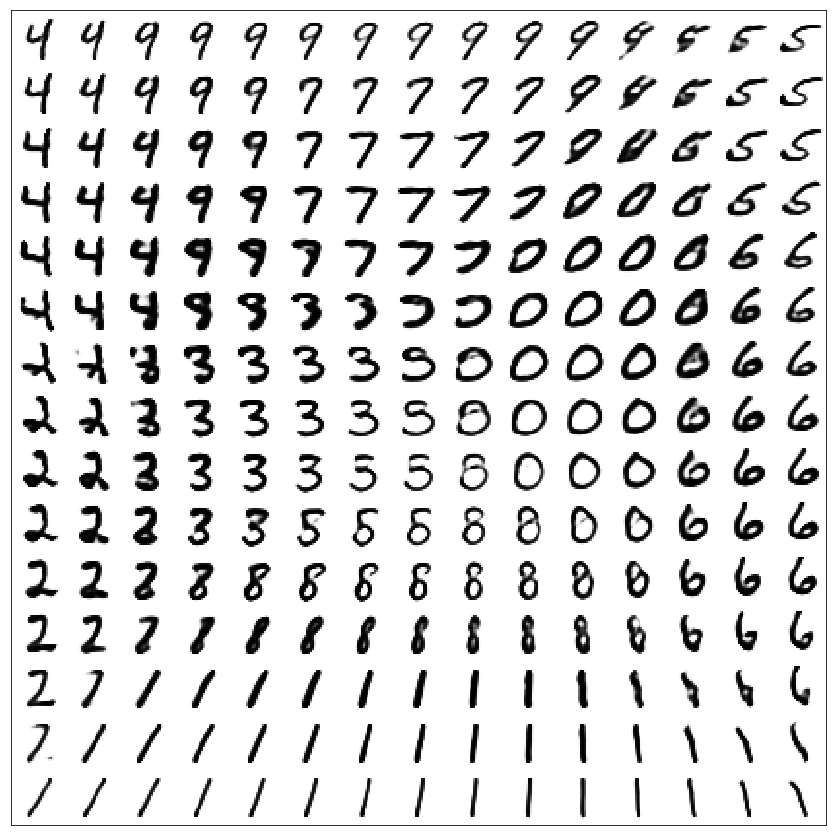
—тоит отметить, что цифры получаютс€ лучше, чем в VAE (без лейблов)
CGAN
ћногообрази€ цифр дл€ каждого лейбла
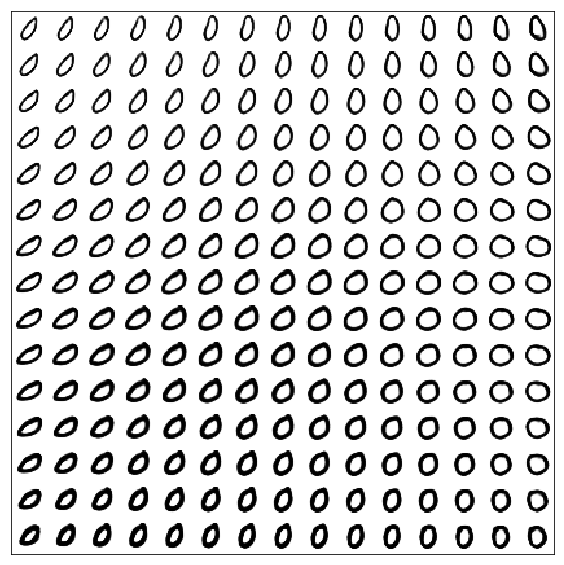
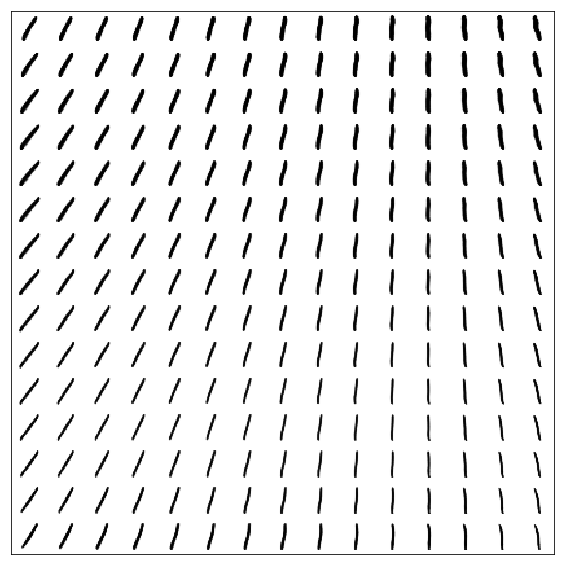
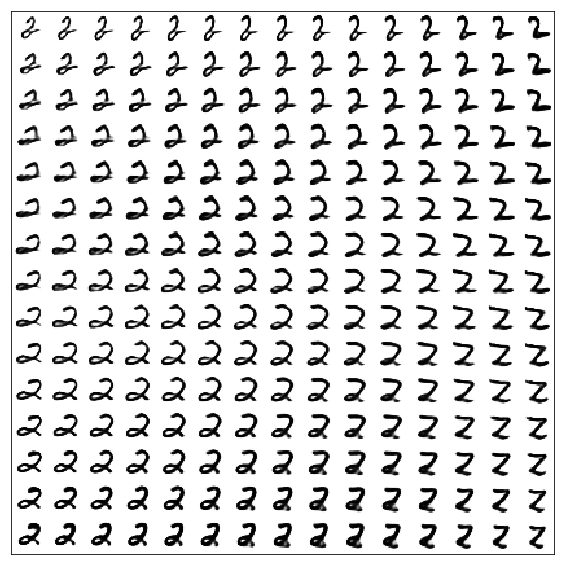
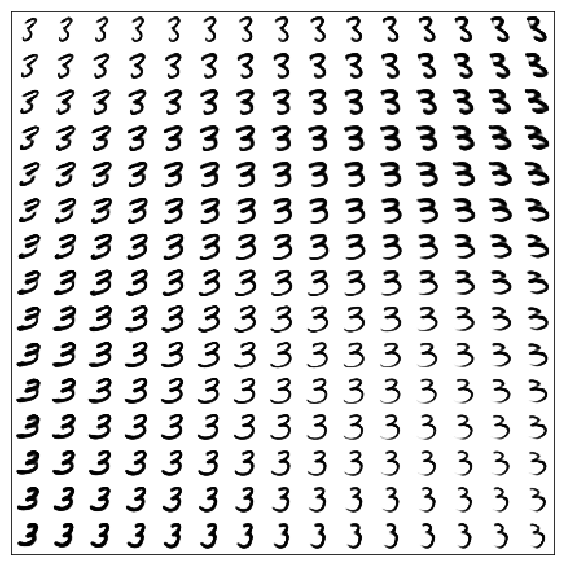
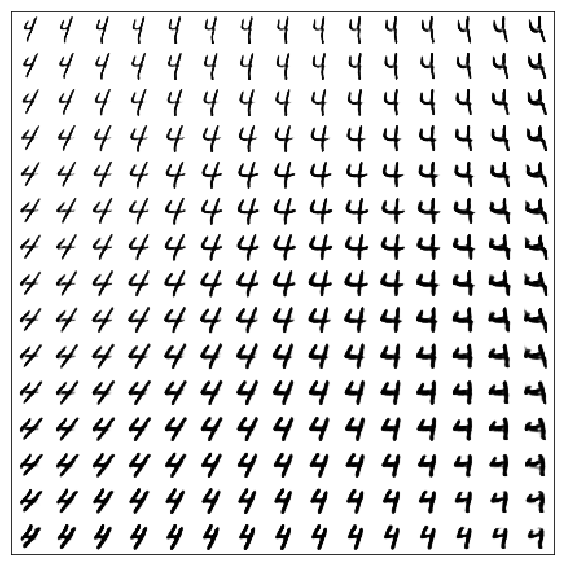
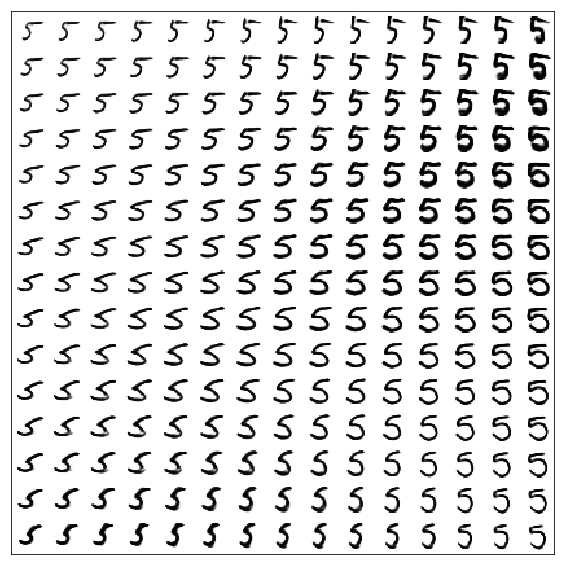
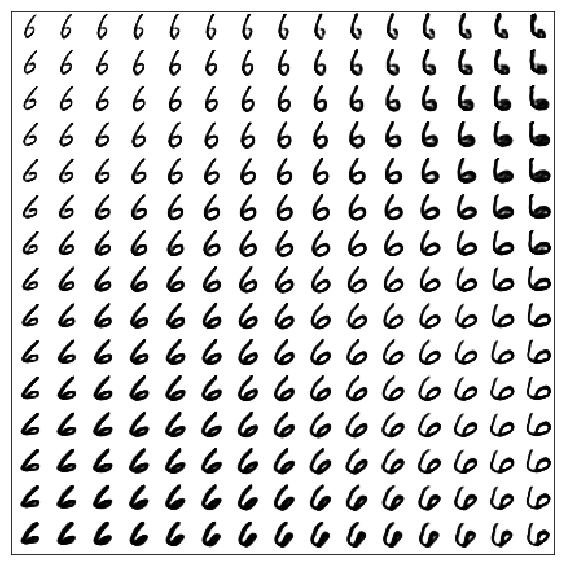
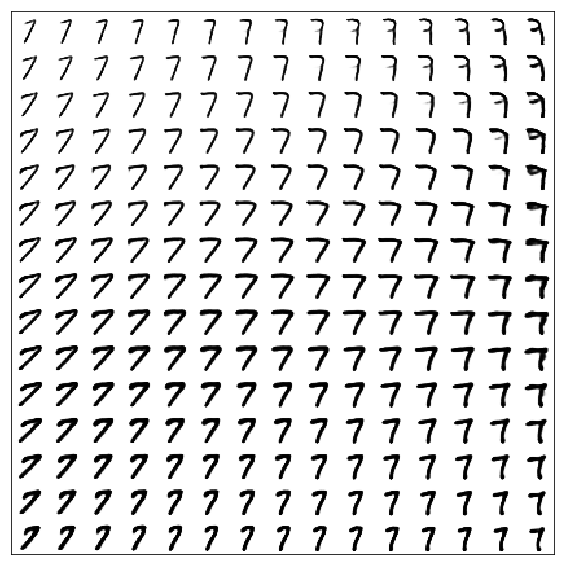


ѕолезные ссылки и литература
ќригинальна€ стать€:
[1] Generative Adversarial Nets, Goodfellow et al, 2014, https://arxiv.org/abs/1406.2661
Conditional GANs:
[2] Conditional Generative Adversarial Nets, Mirza, Osindero, 2014, https://arxiv.org/abs/1411.1784
“уториал про использование keras вместе с tensorflow:
[3] https://blog.keras.io/keras-as-a-simplified-interface-to-tensorflow-tutorial.html
| омментировать | « ѕред. запись — дневнику — —лед. запись » | —траницы: [1] [Ќовые] |

